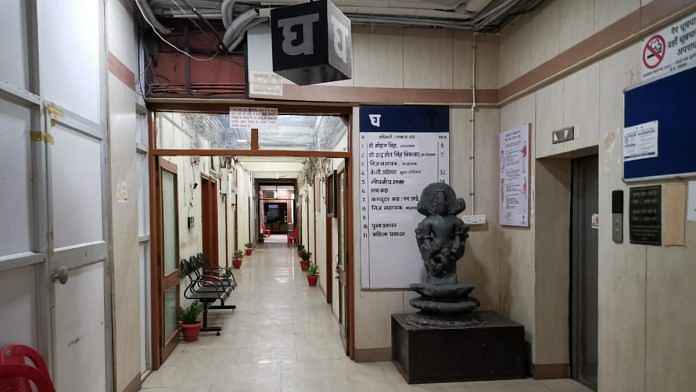Bhopal: In Madhya Pradesh’s hotspot city of Bhopal, also the capital, the office of the Directorate of Health Services (DHS) has been lying sealed for the last two weeks after a coronavirus cluster was discovered. According to the health department’s data accessed by ThePrint, at least 106 cases in the city, including the families of officials, have been traced back to this office.
On Monday, it buzzed with some activity as a few officials, who tested negative for Covid-19, returned to work. Donning masks, they filed in and out of the rooms through the long corridor of the five-storey Satpura Bhawan, situated just 200 metres from the state secretariat.
The building, however, still bore a deserted look as at least 80 officials and staff members of the department, who tested positive, continue to remain under quarantine.
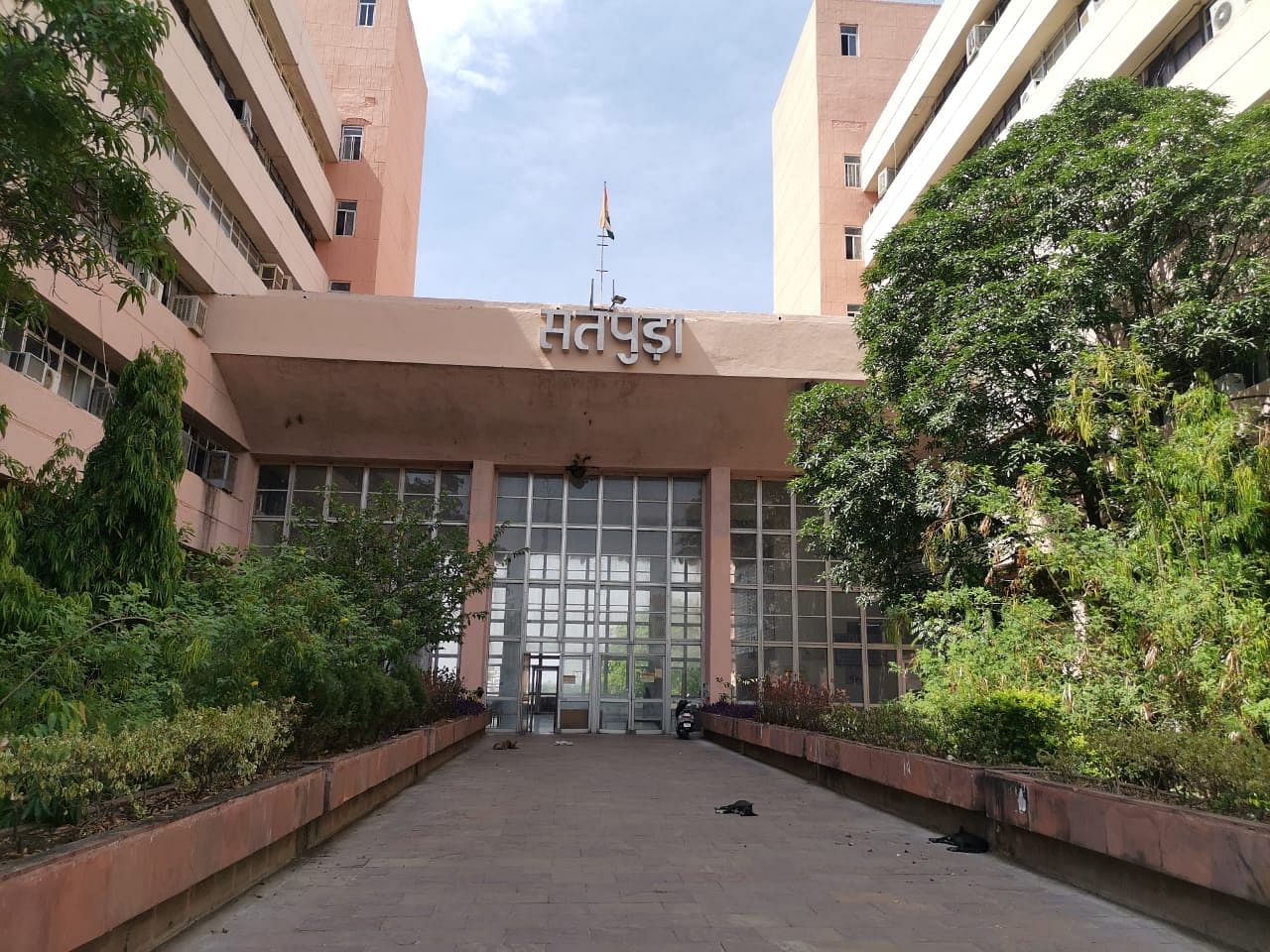
The department has emerged as the biggest hotspot in the city. Several employees told ThePrint that this was probably due to the fact that screening in the building was not rigorously done and the social distancing guidelines not followed.
“No one ever estimated or even thought that we might get infection in our office. We were disseminating the policies about social distancing, but we were only not following the guidelines and that was a huge mistake we have done,” said an official, who did not wish to be named.
The DHS is responsible for communicating the Centre’s direction on the Covid-19 efforts, arranging medical supplies, training staff and collating and sending across information from the field.
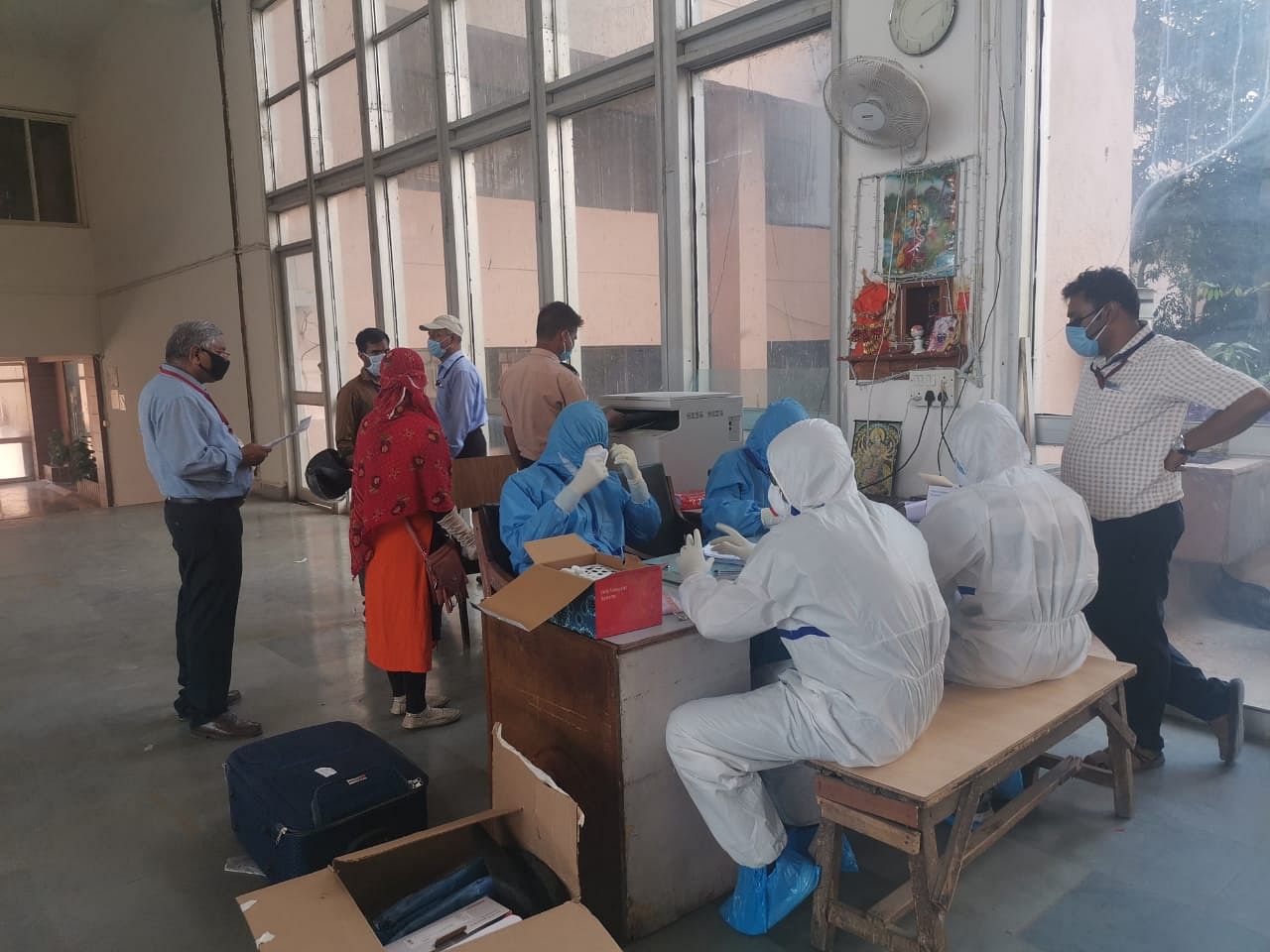
Also read: Delhi to Kerala — State response to Covid-19 makes it clear India needs a new health policy
How it started
The health department has been maintaining a database of its employees who tested positive, their symptoms and when they first developed, date of testing, hospital admission, travel and contact history, and so on.
According to this data, the first person to test positive in the department was Dr Vijay Kumar, the chief executive officer of the Ayushman Niramayam Society and managing director of the MP Public Health Corporation. The 2011 batch IAS officer tested positive for the virus on 3 April, almost three days after he began showing symptoms.
A day later, Principal Secretary, Health, Pallavi Jain Govil, and Additional Director Veena Sinha tested positive. Then, on 5 April, Pramod Goyal of the Integrated Disease Surveillance Programme (IDSP) tested positive.
Govil’s diagnosis sparked a major controversy in the state. According to reports, the Madhya Pradesh Human Rights Commission (MPHRC) had sought a response from the government after allegations were made that top bureaucrats had delayed their hospitalisation despite showing symptoms.
“Guidelines for #COVID2019india are binding for all – rich or small – powerful or weak. MP State Human Rights Commission strict notice to Chief Secy MP has affirmed it. Within hours all officials of health Dept ( 32) hv reached covid hospitals – life saver for many. Get well,” Congress MP Vivek Tankha had tweeted on 7 April.
Guidelines for #COVID2019india are binding for all – rich or small – powerful or weak. MP State Human Rights Commission strict notice to Chief Secy MP has affirmed it. Within hours all officials of health Dept ( 32) hv reached covid hospitals – life saver for many. Get well
— Vivek Tankha (@VTankha) April 7, 2020
The department’s data shows all four officials were not hospitalised immediately after showing symptoms.
Kumar first began showing symptoms on 31 March, but was admitted to hospital three days later. Similarly, Sinha, who also first showed symptoms on 31 March, was admitted to hospital four days later. Jain, who was admitted on 5 April, largely remained asymptomatic.
The fourth official, Goyal, however, had been showing symptoms since 23 March. According to an earlier report of ThePrint, Goyal had returned from Indore on the night of 21 March and was asked to go home and rest two days later, after which he started developing symptoms.
Two employees of the health department said Dr Vijay Kumar, Pallavi Jain and Veena Sinha had held multiple in-person meetings during that time in the Covid-19 control room. This is where the infection is likely to have spread from to the rest of the department.
In guidelines published on 17 March, before any of the officials began showing symptoms, the Ministry of Health and Family Welfare had specified that “meeting, as far as feasible, should be done through video conferencing”.
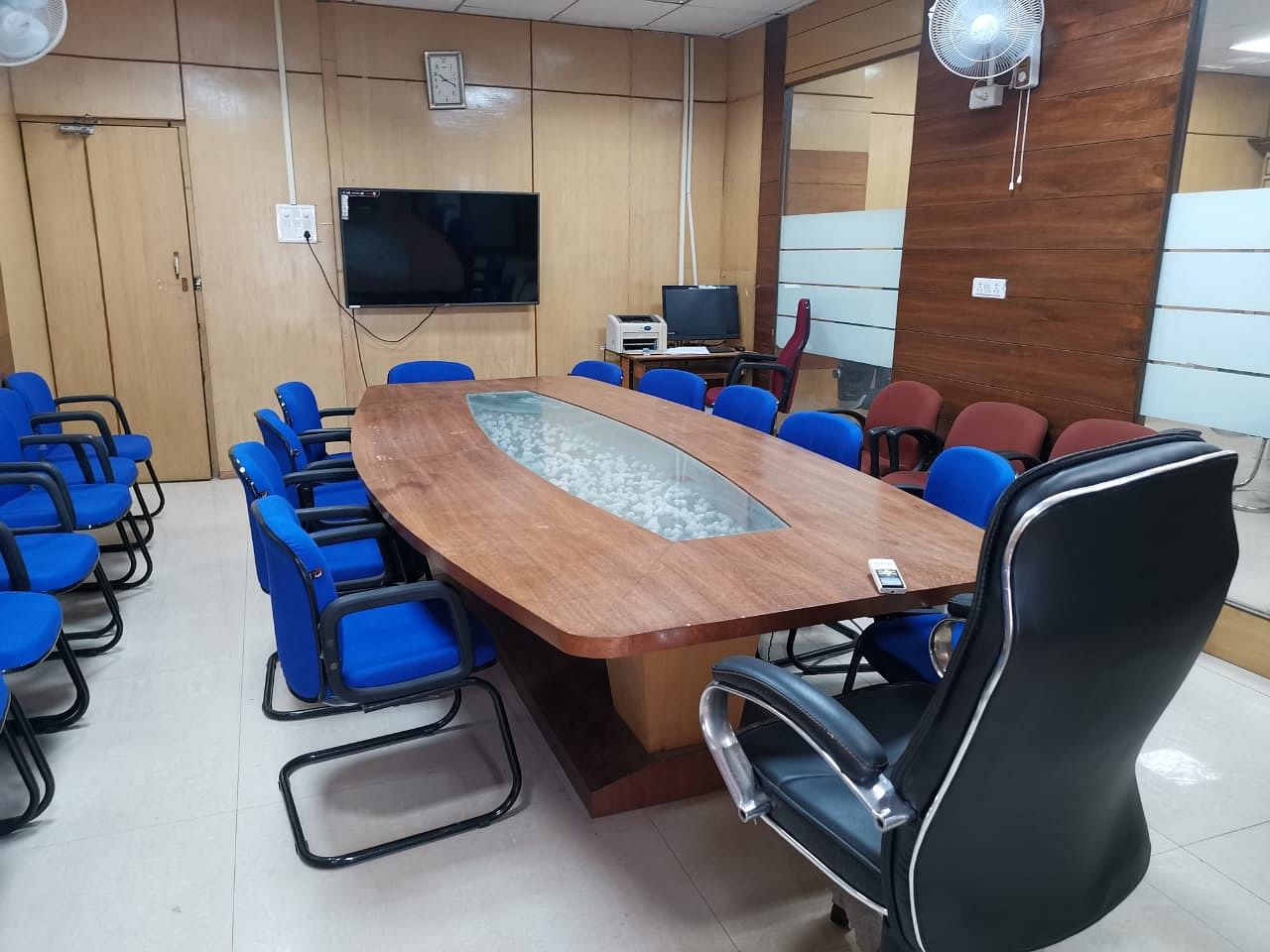
Also read: India’s response to coronavirus can’t be based on existing epidemiological models
How it spread
The Covid-19 control room in the DHS was set up on the fourth floor of Satpura Bhawan within two days of Shivraj Singh Chouhan taking oath as Chief Minister on 23 March. The control room consisted of two large 15-20 seater meeting rooms. Telephone operators would sit in the area outside the meeting rooms and answer grievance calls.
“I think it was the control room that got infected. How and where it started is a little tricky and who was the first infected. It could have be any among them — the Principal Secretary of Health, Additional Director of Health — there were one or two deputy directors as well including Dr Pramod Goyal. It’s among them only,” the health official told ThePrint.
According to him, there would be huge gatherings of 40 to 50 people inside the control room, which were disinfected only every two to three days.
“…the control room got affected and whichever officers were there — the data entry operators and the telephone operators — almost all of them got an infection,” the official said.
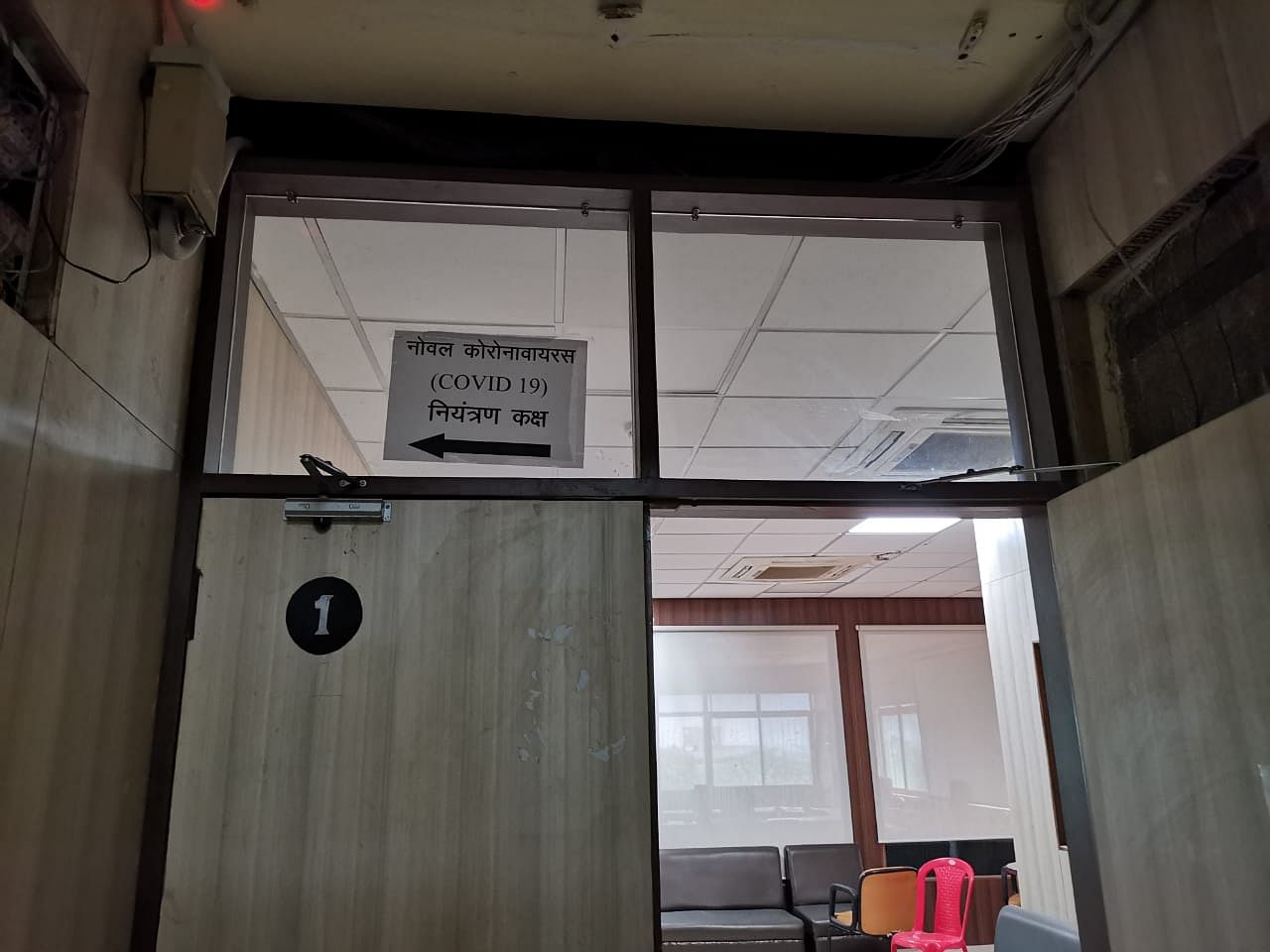
In an interview with ThePrint, health commissioner Faiz Kidwai also indicated that the spread could have occurred from within the control room. “These people (infected) were working together, we had a big control room and we really can’t say who the first [infected] person was because many are asymptomatic. But we know that it suddenly spread to everybody,” he said.
Another employee of the health department, who asked not to be named, told ThePrint that social distancing wasn’t followed inside the room. According to the staffer, Sinha had held several in-person meetings. “Veena Sinha had fever and cough. Everybody knew that. We were all scared,” he said.
When asked if anyone told Sinha to refrain from coming, he responded, “Who will tell her, she’s an additional director. We didn’t even see the principal secretary coughing — she was healthy, so no one doubted. But, we stayed in that environment, so that is why we fell sick.”
By 5 March, at least 13 officials had tested positive for Covid-19.
An inquiry is now underway to draw the epidemiological links between the infected officials. A contact tracing exercise is underway, which also indicates links between the health department and the police department, the second major cluster in the city.
At least 28 police personnel were infected with Covid-19 in the city, and the police headquarters has also been sealed till 26 April.
ThePrint managed to access the room where the contact tracing exercise is being carried out, where elaborate charts have been prepared in attempts to map out the coronavirus cluster.
Also read: India’s healthcare delivery can improve if frontline workers are held accountable: Study
‘No disruption in work’
A few days after Dr Kumar tested positive, Satpura Bhawan was cordoned off and the officials were tested and asked to quarantine themselves inside their homes. The building, especially the three floors occupied by the health department, were thoroughly sanitised. Despite the outbreak, health officials ThePrint spoke to said there was only a little disruption in the work in this time.
Additional Chief Secretary Mohammed Suleiman, who took charge three days after Jain tested positive, told ThePrint that only the work connected with the “management information systems” took a hit for two days.
“Other than that nothing changed … the only change that we did is that we shifted to video conferences rather than physical meetings in which groups of people would sit together,” he said.
Kidwai said a few officials were brought in from other offices of the health department and some, who were on leave, were asked to report back. The officials started working out of the office of the Directorate of Women and Child Development (WCD), located about a kilometre away.
“We were operating from building of the WCD department. Initially, there were about eight to 10 persons and we worked there for 10 days,” he said.
A few officials, who had tested positive, were also working from hospitals, like Jain. On 6 April, she released a video message along with the day’s health bulletin, saying, “You must have read in newspapers that I have tested positive. Because we were continually working with many officers, it’s possible that I may have got the infection from someone. But I don’t have any symptoms. I am healthy and on doctor’s advice working from my room.”
Twenty eight of the 106 officials have so far been discharged, according to the health department’s list, and are set to return to work.
Also read: Has politics in Madhya Pradesh damaged its battle against coronavirus?


